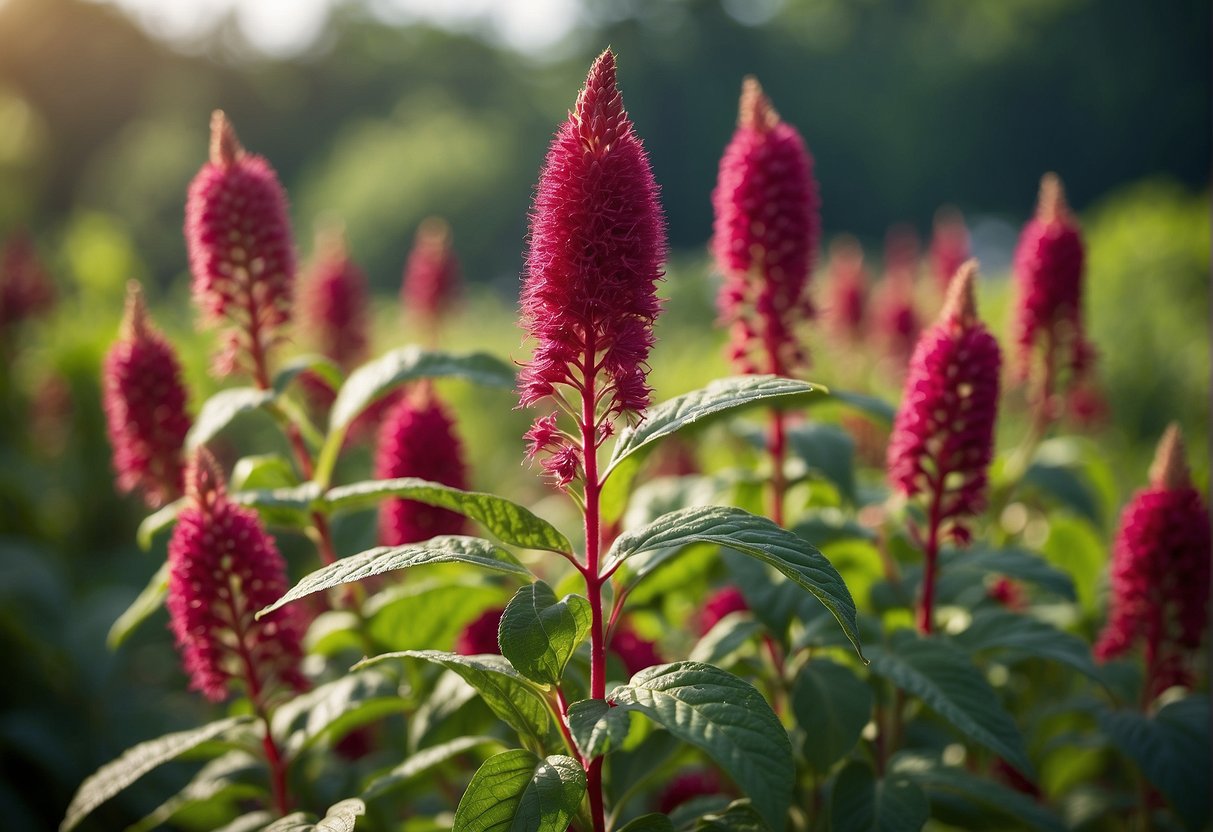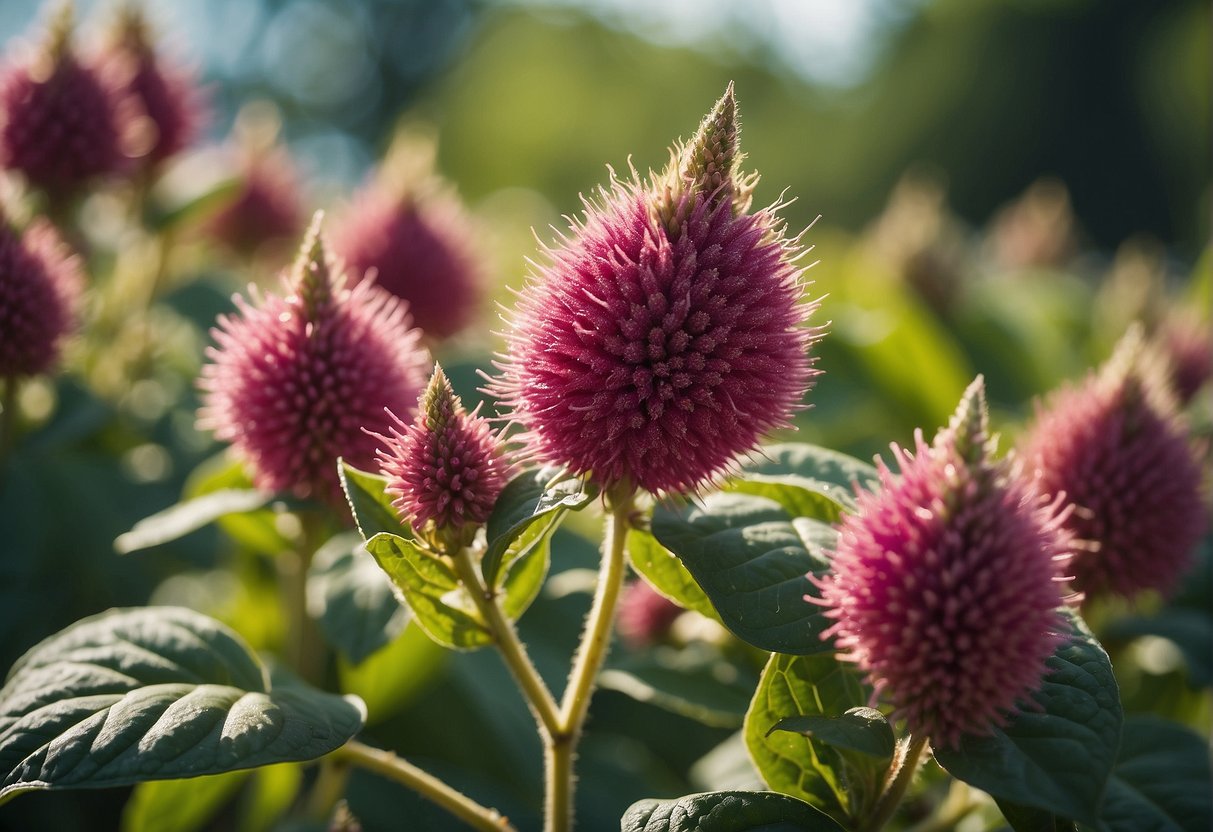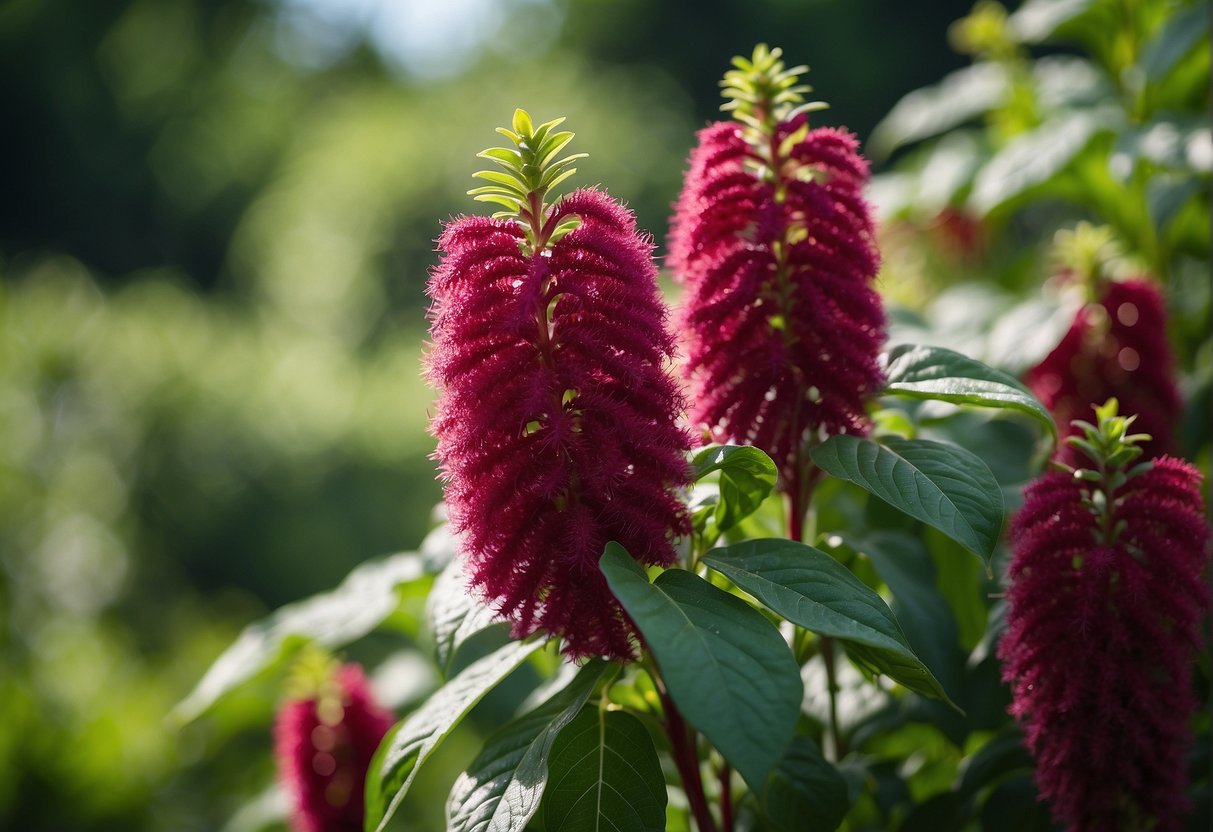Amaranth Love Lies Bleeding: A Guide to Growing and Caring for This Unique Plant
Amaranth Love Lies Bleeding, also known as Amaranthus Caudatus, is a striking ornamental plant that belongs to the Amaranthaceae family. It is native to South America but is now widely cultivated in different parts of the world for its unique beauty and versatility. This plant is known for its long, drooping, and tassel-like flowers that come in shades of deep red, purple, or green.

The name “Love Lies Bleeding” is derived from the plant’s appearance, which resembles blood dripping from a wound. This unique characteristic has made it a popular choice for gardeners and florists alike, as it adds a dramatic touch to any landscape or floral arrangement. In addition to its aesthetic appeal, Amaranth Love Lies Bleeding is also known for its nutritional value, with its leaves and seeds containing high levels of protein, fiber, and essential minerals.
Overall, Amaranth Love Lies Bleeding is a fascinating plant that has captured the attention of many people around the world. Its striking appearance, versatility, and nutritional benefits make it a popular choice for both ornamental and culinary purposes. Whether you are a gardener, florist, or food enthusiast, this plant is definitely worth exploring.
Botanical Profile

Species Overview
Amaranth Love Lies Bleeding, also known as Amaranthus caudatus, is an annual plant that belongs to the Amaranthaceae family. This species is native to South America, specifically Peru and Bolivia, but has been widely cultivated and naturalized in other parts of the world.
Cultivation History
Amaranthus caudatus has a long history of cultivation, dating back to the ancient Aztecs and Incas who revered it for its nutritional and medicinal properties. Today, it is grown for both ornamental and culinary purposes.
Plant Characteristics
Amaranth Love Lies Bleeding is a tall plant that can reach up to 6 feet in height and 2 feet in spread. It prefers full sun and well-drained soil with a pH between 6.0 and 7.5. The plant has green leaves and upright stems that are topped with long, drooping clusters of flowers. The flowers are initially green but turn deep red as they mature, giving the plant its characteristic “love lies bleeding” appearance.
Amaranthus caudatus blooms from mid-summer to fall and its foliage is a bright green color. The plant is known for its showy, dramatic appearance and is often used in floral arrangements. It is hardy in zones 2-11 and can tolerate a wide range of temperatures and soil conditions.
Overall, Amaranth Love Lies Bleeding is a unique and beautiful addition to any garden or landscape. Its striking appearance and cultural significance make it a popular choice for both ornamental and culinary purposes.
Growing Guide
Sowing Instructions
Amaranth love lies bleeding can be grown from seeds sown directly in the garden or started indoors. Sow the seeds in the early spring after the last frost date or in the late summer for a fall harvest. The seeds should be planted 1/4 inch deep in well-draining soil. Keep the soil moist until the seeds germinate, which should take about 7-14 days.
Location and Sunlight
Amaranth love lies bleeding prefers full sun but can also tolerate part shade. It can grow in a variety of locations, including garden beds, borders, and containers. When choosing a location, make sure the soil is well-draining and has a pH of 6.0-7.5.
Soil Requirements
The soil should be moist but well-draining, with a pH of 6.0-7.5. If the soil is too acidic, add lime to raise the pH. If the soil is too alkaline, add sulfur to lower the pH. Amaranth love lies bleeding prefers soil that is rich in organic matter, so adding compost or well-rotted manure can help improve soil quality.
Watering and Care
Amaranth love lies bleeding requires regular watering, especially during hot and dry periods. However, it is drought-resistant and can tolerate short periods of drought. Water the plants deeply once a week, making sure the soil is moist but not waterlogged. Mulching around the plants can help retain moisture and suppress weeds.
Varieties
There are several varieties of amaranth love lies bleeding, including ‘Green Tails’ and ‘Red Spike’. ‘Green Tails’ has green flowers that turn red as they mature, while ‘Red Spike’ has deep red flowers that can grow up to 2 feet long.
Overall, amaranth love lies bleeding is a relatively low-maintenance plant that can add a unique and dramatic touch to any garden. With proper care and attention, it can thrive in a variety of conditions and provide a beautiful display of color and texture.
Pests and Problems

Common Pests
Amaranth love lies bleeding is generally a hardy plant that is resistant to most pests. However, it can sometimes attract aphids, which are small, soft-bodied insects that feed on the sap of plants. Aphids can be controlled by spraying the plant with a solution of water and dish soap or by introducing natural predators such as ladybugs.
Plant Diseases
One of the most common problems that amaranth love lies bleeding faces is root rot. Root rot is caused by a fungus that thrives in wet soil conditions. To prevent root rot, it is important to ensure that the soil is well-draining and that the plant is not overwatered.
Another issue that can affect amaranth love lies bleeding is weed competition. Weeds can compete with the plant for nutrients and water, which can stunt its growth and reduce its overall health. To prevent weed growth, it is important to keep the area around the plant free of weeds.
Invasive
Amaranth love lies bleeding is not considered an invasive species, but it can self-seed and spread if not properly maintained. To prevent the plant from becoming invasive, it is important to remove any spent flowers and to cut back the plant before it goes to seed.
Uses and Significance

Culinary and Nutritional Value
Amaranth Love Lies Bleeding is an edible plant that has been used for centuries as a food source in many cultures. The grain of this plant is gluten-free and is rich in protein, making it a popular choice for those who are looking for a healthy alternative to wheat and other grains. The leaves of the plant can also be eaten and are similar in taste to spinach.
Amaranth Love Lies Bleeding can be ground into flour and used in a variety of recipes, including bread, pasta, and baked goods. The oil from the seeds can also be extracted and used for cooking.
Ornamental Applications
Amaranth Love Lies Bleeding is a popular ornamental plant that is often used in beds, borders, and hanging baskets. The plant produces showy tassel flowers that are red in color and can be used as a cut flower. The plant is evergreen and can be grown in containers, making it a great choice for those with limited space.
Cultural and Historical Uses
Amaranth Love Lies Bleeding has a rich cultural and historical significance. In Inca culture, the plant was considered sacred and was used in religious ceremonies. The plant was also used by the Aztecs as a food source and for medicinal purposes.
The plant’s common names, Love Lies Bleeding and Tassel Flower, come from the language of flowers, where it is associated with hopeless love and sorrow. The plant’s significance in history and culture has made it a popular choice for organic and gluten-free gardens.
In conclusion, Amaranth Love Lies Bleeding is a versatile plant that has both culinary and ornamental uses. Its rich cultural and historical significance make it a popular choice for those looking to add a unique touch to their gardens.
Harvesting and Storage
Harvesting Seeds
Amaranth Love Lies Bleeding is a beautiful ornamental plant that can also be grown for its edible seeds. The seeds are ready for harvesting when the flowers have faded and the seed heads have turned brown. To harvest the seeds, cut the entire seed head off the plant and place it in a paper bag. Be sure to label the bag with the date of harvest and the plant variety.
Drying and Preserving
To dry the seeds, hang the paper bag in a dry, well-ventilated area for several weeks. Once the seed heads are completely dry, remove the seeds from the head by rubbing them gently with your hands. Be sure to remove any chaff or debris from the seeds.
Store the seeds in an airtight container in a cool, dry place. The seeds can be stored for up to two years.
If you plan on using the seeds for cooking, be sure to rinse them thoroughly before use to remove any remaining chaff or debris.
Seedlings can be hardened off and transplanted into the garden once they have developed their second set of true leaves. When transplanting, be sure to space the plants 18-24 inches apart to allow for proper growth.
Overall, harvesting and storing Amaranth Love Lies Bleeding seeds is a simple process that can provide you with a beautiful ornamental plant and a nutritious grain for cooking.
Frequently Asked Questions

What are the uses of Love Lies Bleeding?
Love Lies Bleeding is primarily grown for its ornamental value. It is commonly used in flower arrangements and is a popular choice for adding color to gardens and landscapes. The plant is also used in traditional medicine for its anti-inflammatory properties.
Can Love Lies Bleeding be grown in pots?
Yes, Love Lies Bleeding can be grown in pots. However, it is important to ensure that the pot is large enough to accommodate the plant’s root system. The plant also requires well-draining soil and regular watering.
How can you create a hanging basket with Love Lies Bleeding?
To create a hanging basket with Love Lies Bleeding, start by selecting a basket that is large enough to accommodate the plant’s root system. Fill the basket with a well-draining soil mix and add a slow-release fertilizer. Plant the Love Lies Bleeding in the center of the basket and water thoroughly. Hang the basket in a location that receives partial to full sun.
What is the symbolism behind the Love Lies Bleeding flower?
The Love Lies Bleeding flower is often associated with love and heartbreak. Its drooping, blood-red flowers are said to represent tears shed by a broken heart. In some cultures, the flower is also associated with death and mourning.
What is the process for drying Love Lies Bleeding?
To dry Love Lies Bleeding, cut the flowers from the plant when they are fully mature. Remove any leaves or stems and tie the flowers in small bundles. Hang the bundles upside down in a dry, well-ventilated area for several weeks. Once the flowers are completely dry, they can be used in flower arrangements or other decorative projects.
How long does it take for Love Lies Bleeding to germinate?
Love Lies Bleeding typically takes 7-10 days to germinate when grown from seed. However, it is important to note that germination rates can vary depending on growing conditions and the quality of the seed.
